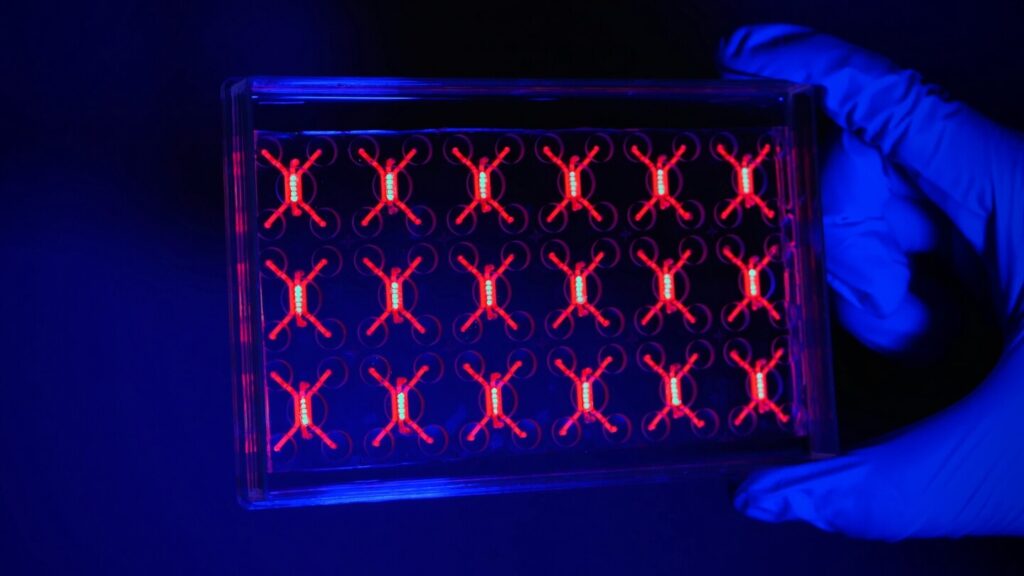
(Image: Courtesy of Dan Huh)
For a little over two decades, chimeric antigen receptor (CAR) T cell therapy has emerged as a powerful new way to treat cancer. By extracting patients’ T cells, re-engineering them to recognize tumor antigens, and infusing them back into the body, physicians have achieved effective treatments for leukemia and lymphoma cancers.
“This approach has achieved remarkable success against blood cancers, but the same cannot be said for solid tumors, which account for over 90% of all cancers,” says Dan Dongeun Huh, professor of bioengineering at Penn’s School of Engineering and Applied Science. “The main challenge is in overcoming the tumor microenvironment (TME), a fortress-like, hostile ecosystem that actively ‘protects’ and ‘hides’ malignant cells from immune attack.”
Cancer cells are nourished by dysfunctional “leaky” blood vessels and shielded by a network of biological signals. Getting cancer-killing CAR T-cells through this fortress wall, let alone keeping them functional once inside, has been a monumental challenge.
Now, Huh and his collaborators have developed a transparent, microengineered device that houses a living, vascularized model of human lung cancer—a “tumor on a chip.” Their findings, published in Nature Biotechnology, give scientists a real-time window into how engineered immune cells interact with cancer, revealing weaknesses in the tumor’s defense and uncovering unexpected ways to help the immune cells win.
